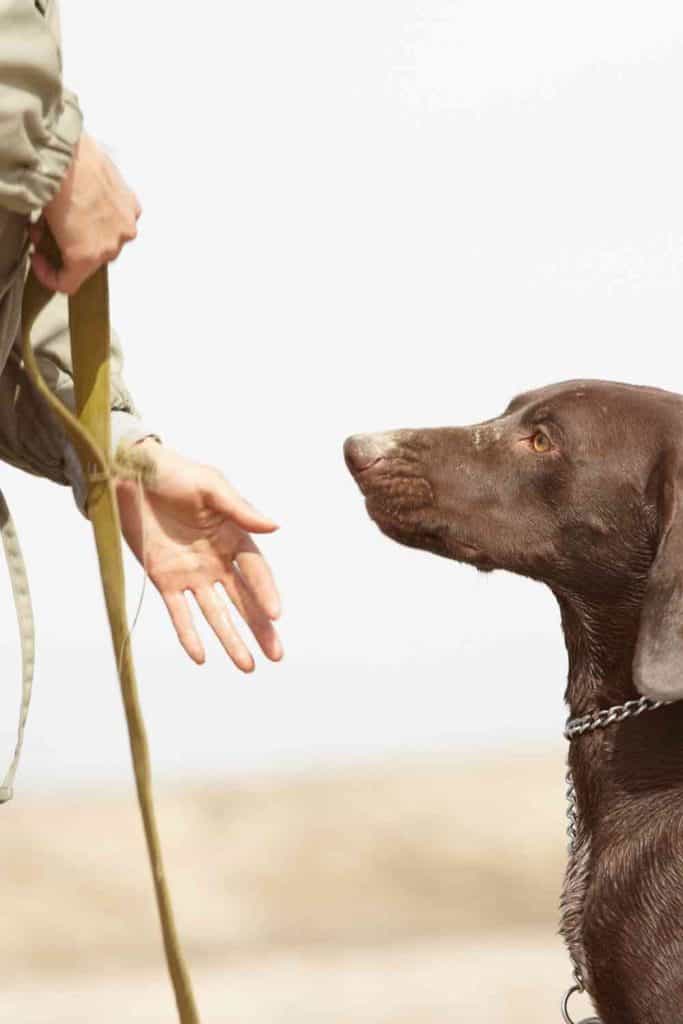Why Do Pointers Cry?
Knowing why a pointer is crying can go a long way in helping you fix the problem. A crying pointer can sometimes be the most stressful sound you hear in a day, but there is always a solution!
Pointers cry out of boredom, pain, excitement, stress, fear, lack of exercise, or need for attention. Obedience training and varied exercise routines are common solutions. Crying may indicate a more serious condition requiring medical attention.
Crying can be irritating or worrying depending on your individual pointer and their habits. Before writing off crying as a simple irritation, it’s important to assess the situation figure out if it’s habitual or unusual. Learning what the crying stems from can go a long way in helping you stop the problem at its source.
Reasons Your Pointer is Crying
Pointers’ crying (more commonly known as whining) can be very stressful if we don’t know how to make it stop. Whining is an indicator of many things in a pointer’s world.
They can’t communicate with us how we typically communicate with each other. Asking your pointer “what’s wrong?” will typically only afford you a confused head tilt. Their whining, barking, growling, and howling are all used at an attempt to communicate problems or needs with us (their owners).
Communication is key to any relationship. There! I said it! This old cliche is as close to the truth with dogs as it is with humans.
Why does a dog whine? Let me count the reasons! A few different reasons your pointer may cry (or whine) include:
- excitement
- desire for attention
- begging
- boredom
- pain
- stress
- fear
- lack of exercise or mental stimulation
That’s quite a hefty list, and it can seem overwhelming dealing with the different causes. Luckily enough, many of these problems can be grouped together under the same solution.
Many times, consistent obedience training can be key to stopping whining. Other times, it may just be temporary whining that requires attention to their fear or stress. In more serious cases, crying can indicate minor pain or more serious medical conditions.
If you ever suspect that your pointer is in pain for some unseen reason, bring them to your veterinarian to find out the source.
Fixing Pointer Crying That is Constant
If you have deemed your pointer a “whiner” then it’s probably a good thing to start trying multiple things to curb that habit. Habitual whining is usually due to a pointer unable to express themselves and has found that the most effective results of getting your attention come from whining.
Excitement, a desire for attention, begging, boredom, or lack of exercise and mental stimulation are all things that have been fixed before through three different avenues. These include:
- obedience training
- varied exercise routines
- specific mental stimulation
It’s important to remember that these three outlets are not magical solutions. They are not instantaneous and will require a lot of patience, willpower, and time.
It’s best to start training when your pointer is a young puppy to help them grow and learn at the same time. Starting early really helps solidify good habits in your pointer. Remember that bad habits are just as easy to develop, so it’s important to stay vigilant.
If your pointer is already full-grown, it is still possible to curb this habit with the same determination and patience. Older dogs will typically show a bit more stubbornness when giving up a habit they’ve had for years.
1. Obedience Training

Obedience training is a great tool for pointers in general. This breed is typically bred for long hunting days and is naturally very athletic and energetic. They require daily vigorous exercise to stay healthy and to deplete their natural abundance of energy.
Even pointers who don’t show crying habits benefit greatly from consistent obedience training. Training is recommended to begin right at 8 weeks old when you get them. Training doesn’t start out extreme, but the basics are still beneficial even at such a young age.
Obedience training is great because they can learn ways to get your attention that don’t include whining or jumping. They can learn how to communicate with you effectively without making crying sounds constantly.
Usually, it comes from consistency where they begin to understand what is acceptable to you. This will require a lot of repetition and consistency. Pointers are very intelligent and can pick up new skills and habits easily when they understand what will get them a reward or praise.
Crying is quickly understood to be a negative behavior during obedience training and gets them no reward. Rewards are what pointers respond to best, and they will do anything to receive one. Use treats to incentivize your pup to act the way you want him or her to.
2. Exercise

Exercising your pointer daily can also go a long way to helping diminish the habit of crying. Sometimes pointers will cry because they are bored, anxious, or stressed. A lot of these issues can stem from a lack of sufficient exercise.
Pointers ideally require at least two hours of vigorous exercise each day. Exercise not only works their muscles, but it also helps to expel energy. Pent up energy can build up and turn negative if left unchecked.
Some ways to keep exercise interesting and more effective than a casual walk along the street include:
- going for a run
- having your pointer run alongside your bike
- going for a hike
- taking your pointer to a safe, open field where they can run and roam
- going for a swim

Pointers that don’t get enough exercise and mental stimulation will try to cope by digging, barking, whining, or chewing.
3. Mental Stimulation
Mental stimulation is just as important as exercise for a pointer because they are so intelligent and have been bred to track and problem-solve on the hunting field.
Activities that fall under the “mentally stimulating” category can be anything from playing fetch to allowing your pointer to run and roam around a large open field. They will track and follow scents that help them think and problem solve while they search.
Once these basic needs are satisfied, your pointer will be calmer and more willing to listen to you. If whining is still continual after meeting these needs then you may have to call a veterinarian or other expert that can give you more specific guidance for your pointer.
Remember that this solution will possibly not get you the results you need until after a few weeks or months of consistency. It’s important to know that physical and mental exercise always need to be paired with obedience training to be the most effective.
Addressing Unusual Pointer Crying
You may find that your pointer that never whined before is now crying and whining. You don’t know what to do, and you may be a little nervous. Pointers that don’t habitually cry can also be lacking in exercise or mental stimulation.
You will want to reassess how much exercise your pointer is getting to make sure it’s enough.
They may also be stressed or scared by new people, animals, noises, or events. Assess the situation your pointer has been in to see if they need to be removed from the situation or comforted.
Before changing their routine and claiming anything as the cause of your pointers unusual crying, you will want to check out your pointer because they may have some injury or medical problem that requires attention.
Medical Problems and Pain
Injury is sometimes a common cause of a pointer’s abnormal crying. You’ll want to take any cues from your pointer (i.e. limping, one paw raised, licking) to identify the root of the injury.
If you can’t seem to find a physical injury and your pointer seems to be in any sort of pain, take them to a veterinarian or pet emergency hospital immediately if you suspect the problem to be more serious. A call to your veterinarian is a good place to start and they can recommend the best course of action.
On occasion, pointers may discover that they can get attention by feigning pain, but those moments are rare and can typically be understood as false upon closer inspection.
It’s best practice caution and take your pointer to the veterinarian to get them checked out. Here you will be able to get advice about the best thing to do to fix the problem.
